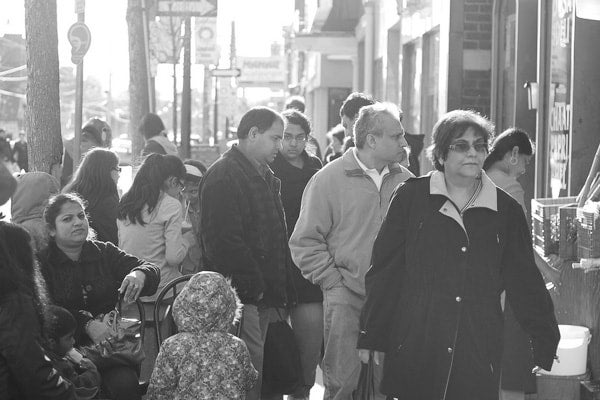
Toronto by-laws fail to address city’s diversity, research finds
Published: October 25, 2012
Diversity is one of the defining qualities of the city of Toronto but you’d never know it by the way municipal by-laws are designed and enforced, says criminology and socio-legal studies professor Mariana Valverde.
In fact, some of the city's most popular mechanisms for civic engagement – such as public meetings – do not support inclusion but actually disadvantage marginalized groups, who are less likely to attend or speak up, and who often encounter prejudice at the meetings if they do, Valverde says.
“The unfortunate result is that our officials and citizens only respond to those – mainly middle-aged homeowners – who make their voices heard,” says Valverde, who reports the findings in her upcoming book Everyday Law on the Street.
Valverde and her research team spent four years participating in council hearings and civic association meetings as well as accompanying housing inspectors and law enforcement officials as they went about their day-to-day work. Toronto has countless by-laws covering everything from yards to noise to food truck licenses.
“The zoning by-law alone is thicker than the income tax code,” she says.
Those on the ground recognize that many of the rules are outdated or impossible to enforce, and officers spend most of their time mediating, warning and resolving conflicts which are often in response to complaints. But complaint-driven enforcement is unfair, says Valverde. Complaints from homeowners about garbage or noise are taken more seriously than complaints from tenants, for example.
“In both the letter of the law and in public consultations, we also saw a bias towards single-family detached home ownership as the norm or ideal, as contrasted with public housing or rooming houses,” says Valverde.
In areas of the city where rooming houses are licensed, which are the old city of Toronto and parts of Etobicoke, residents often attend and try to lean on the councillor to pressure city staff to prevent rooming houses from getting license renewals.
Diversity is more than ethnic diversity, says Valverde.
“If Toronto wants to be inclusive, it needs to include tenants as well as homeowners, recent immigrants as well as long-time residents. This means moving beyond micro-local planning to embrace a more expansive, city-wide approach to planning and regulation: a larger view than councilors take now. The current legal and political system encourages what Valverde calls the “one property at a time perspective.”
Valverde advocates getting the community involved in an ongoing basis, not just when a neighbour applies for a variance. She points to New York’s community boards of residents, business owners and city employees that meet regularly to discuss planning policies and approve developments as a more valid model.



